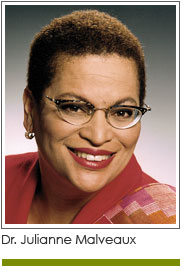 November is diabetes awareness moth, and World Diabetes day is held on November 14 each year. The day aims to increase awareness about diabetes and its complications, and focuses on the need for more resources to fight the causes of diabetes and help fund research about improved treatment options, or even cures. The International Diabetes Federation predicts that by 2030 there will be as many as 552 million diabetics in the world. Presently, nearlyb8 percent of all Americans have been diagnosed with diabetes.
November is diabetes awareness moth, and World Diabetes day is held on November 14 each year. The day aims to increase awareness about diabetes and its complications, and focuses on the need for more resources to fight the causes of diabetes and help fund research about improved treatment options, or even cures. The International Diabetes Federation predicts that by 2030 there will be as many as 552 million diabetics in the world. Presently, nearlyb8 percent of all Americans have been diagnosed with diabetes.
Diabetes doesn't visit every community equally. While 7.1 percent of all white Americans have been diagnosed with diabetes, 8.4 percent of Asian Americans, 11.6 percent of Hispanics and 12.6 percent of African Americans have been diagnosed with diabetes. Among Hispanics, more than 13 percent Mexican Americans and Puerto Ricans have been diagnosed with diabetes. In total, nearly 26 million Americans have been diagnosed with diabetes.
I say, "have been diagnosed with" as opposed to "have" because diabetes is often described as a "silent" disease. You can have it without knowing. It can get complicated without your knowledge. You can find yourself dizzy, disoriented, or even just excessively thirsty and think its no big thing, only to find out that it is diabetes. Take it from me, I know. While I don't often use my column for testimony, this is an important enough issue to stop and testify. I was walking around with crazy high blood sugar levels (that I wasn't checking) thinking I was simply stressed, only to be stopped in my tracks when a routine check-up led to two days in the hospital. Talk about scared straight! Now, I'm taking my meds, watching my diet, and testing blood sugar at least twice a day. Diabetes is nothing to fool with.
But if predictions are correct more and more of us will have to manage it. The Centers for Disease Control and the National Instates of Health has issued a report called "The Diabetes Epidemic Among African Americans" that outlines the growing incidence of diabetes among African Americans, especially women over 45. And even in the overall population, diabetes is on the rise. By 2050as many as one in three Americans will be diagnosed with diabetes unless somebody finds a cure.
I had these facts in mind last Saturday when I had the honor of speaking to the Annual Biomedical Research Conference for Minority Students in St. Louis, Missouri. There were about 3000 undergraduate, graduate, and even high school students attending, many showing off their work in poster sessions that highlighted their research. There was a young African American from Tuskegee doing research on breast cancer, a Latino brother from Cornell University, a community college transfer, who was exploring his options in science, sisters from Spelman and Jackson State University, and of course Bennett College for Women was in the house, represented by students, faculty and alumnae.
The United States will continue to fall behind globally if we can't get more students of color focused on the sciences. In a report by the National Science Foundation called Gathering Storm, "For the US to maintain global leadership and competitiveness in science and technology that are critical to achieving national goals today, we must invest in research, encourage innovation and grow a strong, talented and innovative science and technology workforce." Further, "a strategy to increase the participation of the underrepresented must play a central role in our overall approach to sustain our capacity to conduct research and innovate because our sources for future science and engineering workforce are uncertain, shifting demographics are dramatic, and diversity in science and engineering benefits both diverse groups and the nation."
But people of color are woefully underrepresented among our nation's sciences, less likely to graduate from high school, from college, and less likely to pursue the doctoral degree that prepares one for key laboratory research. There are so many health disparities that cry out for motivated researchers. Why are so many African American women diagnosed early for breast cancer? Why are we less likely than majority women to recover? Why are there great disparities in life expectancy by race, socioeconomic status and region? And why do so many African Americans and Latinos, especially Mexican Americans and Puerto Ricans have diabetes? I am counting on one of the young researchers that I met to figure out answers to these questions and to, perhaps, find the cure for diabetes. Meanwhile, in this month dedicated to diabetes awareness, let's make sure we share knowledge about this epidemic that visits the African American community more often than it visits others.
Dr. Julianne Malveaux is a noted economist and president of Bennett College for Women.










